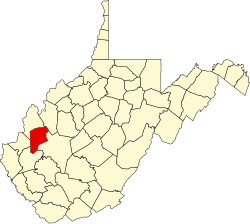Cheyenne Valley | |
|---|---|
| Coordinates: 38°27′5″N81°57′34″W / 38.45139°N 81.95944°W | |
| Country | United States |
| State | West Virginia |
| County | Putnam |
| Elevation | 689 ft (210 m) |
| Time zone | UTC-5 (Eastern (EST)) |
| • Summer (DST) | UTC-4 (EDT) |
| GNIS ID | 1740671 [1] |
Cheyenne Valley is an unincorporated community in Putnam County, West Virginia, United States.


